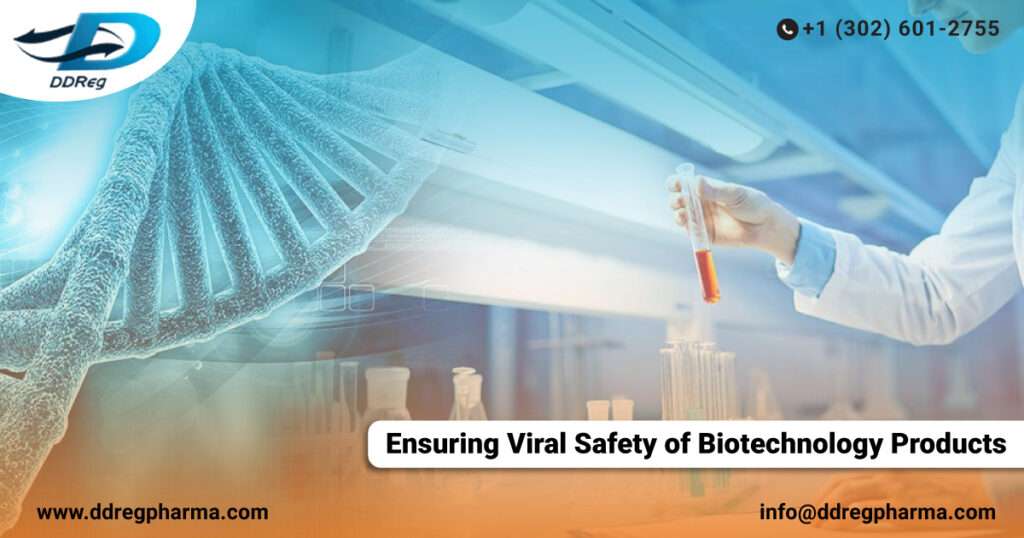Biotechnology products that are derived from cell lines are associated with a certain degree or risk of viral contamination. These risks can be attributed to source cell line contaminations or exogenous introduction of adventitious virus; indeed these risks need to be reduced as contamination can have major consequences. Virus testing programs have supported in assuring the viral safety of these biotechnology products. The US FDA highlights examples of such approaches to control contamination as below:
- “Selecting and testing cell lines (and other raw materials, including media components) for the absence of undesirable infectious viruses”
- “Assessing the capacity of the production processes to clear adventitious and endogenous viruses”
- “Testing the product at appropriate steps of production for demonstrating the absence of contaminating infectious viruses”
Evaluating the Viral Safety of Biotechnology Products
The US FDA’s recent guidance document on Viral Safety Evaluation of Biotechnology Products Derived from Cell Lines of Human or Animal Origin outlines some of the risk-based principles and mitigation strategies which guarantee the viral safety of biotech products. It also provides information on the data requirements for submitting a marketing authorization, replacing the draft guidance that was issued in November 2022.
The guidance document provides information on the potential sources of virus contamination include those that could occur in the master cell bank (MCB), and adventitious viruses that may be introduced during production. It also delineates the kind of tests used to determine the presence of viruses with respect to MCB, working cell bank (WCB), and cells at the limit of in-vitro cell age (LIVCA) used for production & examples of the use and limitations of assays that may be used to test for viruses.
Viral Clearance Studies
Developing a pertinent and logical protocol for virus testing is crucial throughout the different phases of drug production and extending to the final product. The assessment and characterization of viral clearance holds significant importance within this framework wherein the final objective is to ensure confidence in the absence of virus contamination.
Some of the most common situations and examples of action plans implemented in response to virus test results (on cells or unprocessed bulk) are as follows, based on the US FDA guidance document:
Case A | Removal of virus and inactivation studies using non-specific model viruses should be performed when no virus or no retrovirus-like particle (RVLP), aside from the drug substance, is demonstrated in cells or unprocessed bulk. Where RVLPs are not detected, and PERT assay is negative, no estimation of retroviral particles per dose is required. |
Case C | Virus removal and inactivation evaluation studies should use the virus identified in cells or unprocessed bulk that is associated with no evidence of infectivity to humans (i.e., Sf9 rhabdovirus)- this is different from a rodent retrovirus. If the identified virus cannot be used then relevant or specific model viruses should be used to demonstrate clearance. For MAs, data from 3 or more batches of purified bulk, that have been manufactured at the pilot plant or commercial scale should be provided. |
Case D | If a virus, that is infectious to humans, has been identified then it should be used for virus removal and inactivation evaluation studies; methods with high specificity & sensitivity for the identified virus should be used. If the virus cannot be identified then relevant and/or specific model viruses should be used. Data from 3 or more batches of purified bulk that are manufactured at pilot plant or commercial scale should be provided. |
Case E | A product may be considered “unacceptable” if a virus has been detected in cells or unprocessed bulks that has not been classified by currently available methodologies. For this, there may be justifications for drug production that have used these cell lines and should be discussed with the regulatory authority. |
Case F | Clearance of a virus (production virus) that is used in manufacturing should be shown using the specific model virus or production virus. The absence of production virus should be tested and performed for each purified bulk (unless it has been justified by reliable excess clearance. |
DDReg brings end-to-end expertise in regulatory services to ensure compliance and safety of biotechnology products. The team has 15 years of experience in navigating the complex web of regulations to facilitate biotechnology product approval and market access. Read from our experts to know more about their take on key topics within the industry: Regulatory Roadmap for Access to MedTech

